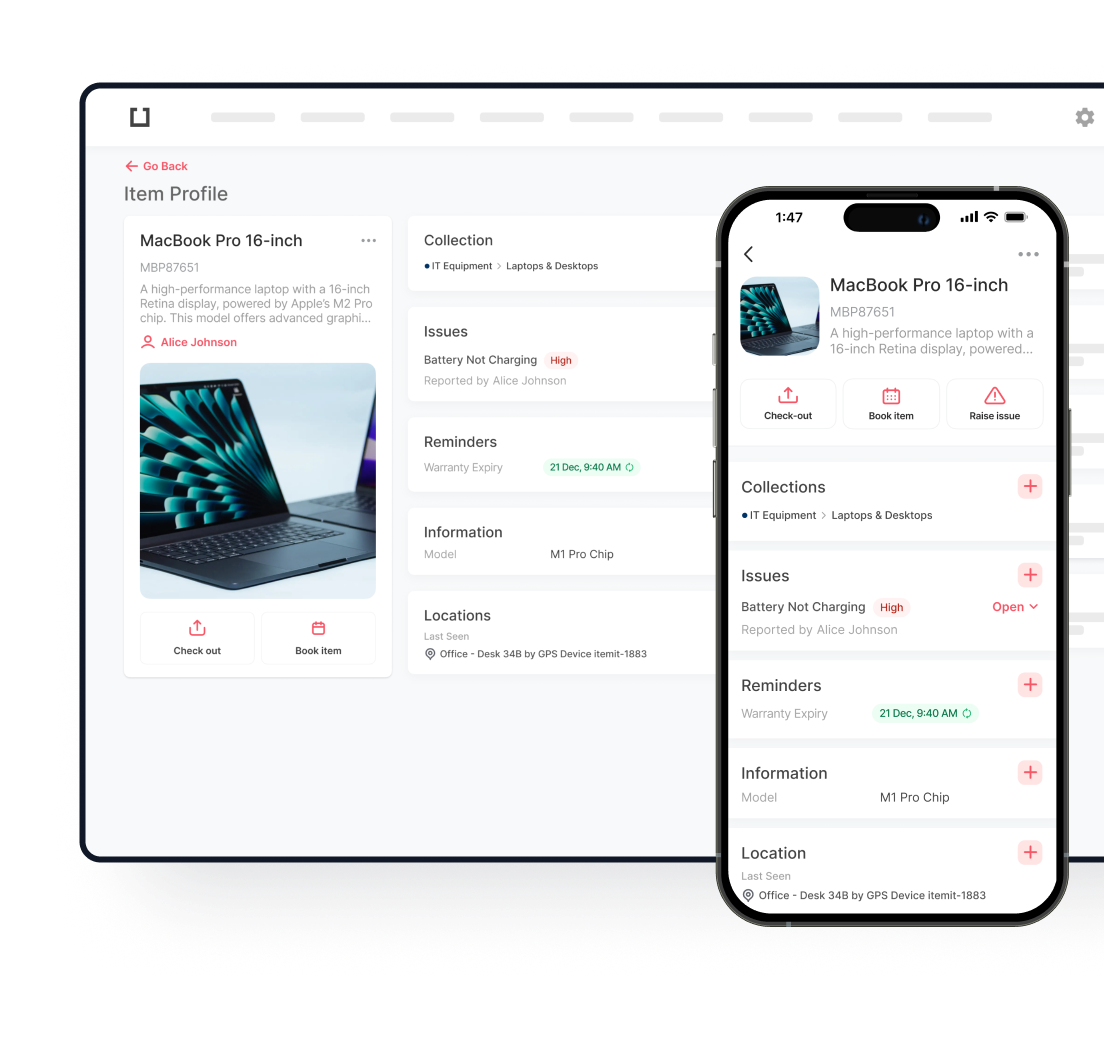
Forming the core of your production and profitability, your assets are among the most important elements of your company operations. They actually maintain the lights on, the wheels going, and your company functioning without problems. Maximising productivity, lowering unplanned downtime, and prolonging the lifetime of your equipment depend on safeguarding these valuable resources via a disciplined and efficient asset maintenance management strategy. By tackling such problems early on, proactive maintenance helps you to save important time and money by preventing escalation of such problems. Giving correct maintenance top priority not only helps you to preserve assets but also invests in the continuous dependability and expansion of your company. Learn our best secrets for guaranteeing long-term success and attaining exceptional asset maintenance management.

Why Is Asset Maintenance Important?
Using good asset maintenance services can help you to extend the lifetime of your equipment, improve performance, and preserve general operating efficiency. This entails lowering the possibility of unanticipated breakdowns, therefore limiting downtime, and greatly lowering the need for expensive emergency repairs for industrial equipment. In offices, too, regular upkeep guarantees a neat, orderly workstation where staff members may concentrate and operate at their best.
A robust asset management maintenance strategy is key to keeping assets in optimal condition. This involves conducting routine repairs, scheduling timely replacements, and addressing minor issues before they escalate into larger, costlier problems. By adopting this proactive approach, businesses not only avoid unnecessary disruptions but also save both time and money in the long run, creating a foundation for sustained operational success.
A well-implemented asset maintenance management system takes this strategy a step further by ensuring streamlined workflows and operational excellence. By prioritising accurate maintenance, regular updates, and comprehensive asset oversight, organisations can eliminate inefficiencies, ensure smooth processes, and maximise the overall value of their investments. This systematic approach fosters a dependable, cost-effective environment that contributes to long-term stability and growth.
Investing in asset maintenance services and a strategic maintenance framework is not merely an operational necessity; it is a forward-thinking decision that ensures resilience and continuous development for your business. With the right maintenance practices in place, your organisation can build reliability, optimise performance, and achieve a competitive edge in today’s fast-paced market. By focusing on the health and efficiency of your assets, you’re securing a path toward operational excellence and steady, sustainable business growth.
5 Tips for Asset Maintenance Management
Create a Database
Creating a comprehensive database or register of your assets is a fundamental step in implementing an effective maintenance strategy. This centralised repository allows you to store all the vital information about your assets in one easily accessible location, streamlining the management process and ensuring nothing important gets overlooked.
With a robust database, you can attach relevant documentation such as user manuals, warranties, and maintenance schedules, making it simple for employees or clients to access detailed information about each asset. Descriptions of the assets can also be included to provide clarity and ensure everyone in the organisation can quickly identify the asset and its purpose.
Integrating asset tracking software further enhances your asset maintenance management approach. This technology enables seamless updates to an asset’s records every time it is scanned, automatically logging its location and current status. This feature not only improves tracking but also ensures that maintenance schedules are adhered to without delays, reducing the likelihood of unexpected failures.
By adopting this structured maintenance strategy, your business can maintain an organised, efficient system that keeps all assets in optimal working condition, ultimately supporting smoother operations and long-term success.

Collect Data
Through insightful analysis of asset behaviour and performance made possible by asset tracking systems, companies may better grasp their whole lifetime. Real-time asset monitoring, essential data collecting, and trend analysis revealing patterns of use, wear, and possible maintenance requirements made possible by this sophisticated tracking help you.
A good asset maintenance management plan revolves mostly on gathering and using these data. By means of asset monitoring, the insights offered enable companies to make data-driven choices like preemptive problem addressing and schedule optimisation of maintenance. This strategy lowers unneeded costs, increases asset usable life, and lowers the possibility of unanticipated failures.
Accurate analytics enable companies to find chances to improve performance, lower inefficiencies, and realise major cost savings. Real-time asset data-based smarter maintenance scheduling guarantees optimal allocation of resources and continuous operation of assets at their best, therefore enabling a more effective and simplified workflow.
Preventive maintenance is more effective than reactive maintenance. Understanding an asset’s lifestyle will enable a maintenance team to perform preventive maintenance at critical points in the cycle that can expand or enhance the asset’s useful life. Tracking the lifecycle will also help you plan and prepare for an asset’s eventual breakdown and get funds together for its eventual replacement.
Set Up a Maintenance Schedule
During the operational phase of an asset’s lifecycle, staying proactive with asset maintenance is critical for ensuring smooth and uninterrupted performance. Despite its importance, many organisations may hesitate to prioritise maintenance due to its associated costs, which are often viewed as a financial burden. Striking the right balance between over-maintenance and under-maintenance is key to achieving optimal productivity without unnecessary expenses.
Excessive maintenance activities can lead to inflated costs that eat into profits, while insufficient maintenance often results in asset breakdowns, reduced efficiency, and operational downtime. Both extremes can have a detrimental impact on a business’s overall performance and profitability. By maintaining accurate and up-to-date records of all assets, organisations can better manage these challenges.
Using a structured asset maintenance management system, companies can prevent downtime by scheduling repairs and routine maintenance well in advance. Automated reminders and notifications ensure that critical maintenance tasks are never overlooked, allowing assets to remain in excellent working condition. This approach not only reduces unexpected interruptions but also enhances productivity and minimises long-term costs, providing a clear path to operational efficiency and profitability.
Equip Your Team With The Right Tech
To successfully implement asset tracking and preventive maintenance schedules as key components of an effective asset maintenance management strategy, it’s crucial to invest in both your workforce and the supporting technology. These two elements work hand-in-hand to ensure the long-term success and efficiency of your maintenance operations.
Providing targeted training for your technicians is essential to guarantee that maintenance tasks are performed accurately and systematically. Properly trained staff are not only skilled in executing their duties but are also adept at documenting their work, ensuring a reliable record-keeping process. However, training should extend beyond the technical skills required to perform maintenance. It must also encompass the knowledge and expertise needed to utilise the advanced tools and systems involved in asset tracking and maintenance management.
When your team fully understands the technology at their disposal—such as asset tracking software, real-time monitoring tools, and predictive analytics platforms—they can maximise its potential. This integration of skilled personnel and innovative technology enhances the accuracy, efficiency, and reliability of your maintenance schedules. Investing in both your team and the technology they rely on creates a cohesive system that drives productivity, reduces downtime, and supports optimal asset performance.
Implement Inventory Tracking
Any effective corporate operation, including asset maintenance management, depends fundamentally on good inventory control. Starting a project only to find that necessary components or materials are not accessible is among the most disruptive events one can experience. Such failures highlight the need of a consistent inventory system as they might cause delays in development, higher expenses, and disturbance of processes.
Advanced inventory management systems help companies avoid these difficulties and guarantee flawless running of their operations. When components are utilised for maintenance projects, this program lets companies automatically update inventory levels, therefore guaranteeing always correct and current stock levels. Such automation offers a clear view of always accessible resources and removes the possibility of human mistake.
Furthermore simplifying procurement and planning is an effective inventory monitoring system. It guarantees that required parts are on hand when needed, therefore minimising delays and streamlining maintenance processes. Real-time monitoring and automatic inventory changes help companies to keep expenses under control and reduce waste by allowing them to concentrate proactive asset maintenance. This strategy improves general operational efficiency and enables improved decision-making, therefore enabling companies to remain ahead in a competitive market.
How Preventive Maintenance Boosts Asset Longevity
Discover the advantages of adopting a proactive and preemptive maintenance strategy, a forward-thinking approach that redefines how businesses manage their assets. Unlike traditional reactive maintenance, which focuses on addressing issues after they arise, preemptive maintenance emphasises identifying and resolving potential problems before they escalate. This proactive method not only minimises the risk of unexpected failures but also ensures assets operate at peak performance, contributing to long-term reliability and efficiency.
A key aspect of this strategy is a comprehensive asset maintenance management plan that prioritises preemptive care. Such a plan enables businesses to schedule routine inspections, carry out timely repairs, and replace components as necessary, all guided by predictive insights rather than waiting for breakdowns to occur. By addressing issues early, companies can avoid costly downtime, minimise the need for expensive emergency repairs, and extend the lifespan of their equipment.
The advantages of preemptive maintenance go beyond cost savings. It fosters a smoother operational environment by reducing interruptions and ensuring consistent productivity. When assets are well-maintained and less likely to experience unexpected malfunctions, employees can concentrate on their tasks without disruption, leading to improved workflow management. Furthermore, a proactive approach enhances control over resource allocation, allowing teams to prioritise tasks effectively and utilise their time and materials more efficiently.
By leveraging modern tools like equipment maintenance tracking systems and data analytics, businesses can further enhance their preemptive maintenance efforts. These technologies provide valuable insights into asset performance, enabling managers to make informed decisions and refine their strategies. The result is a robust maintenance framework that not only supports immediate operational needs but also positions the organisation for sustainable growth and long-term success.
Investing in preemptive maintenance is more than a strategy; it’s a commitment to operational excellence, ensuring assets deliver value while keeping your business competitive in a demanding market.
The Role of Technology in Modern Asset Maintenance Services
The integration of cutting-edge tools and software is revolutionising the field of asset maintenance management, equipping businesses with the tools they need to streamline and enhance their processes like never before. Modern solutions, such as equipment maintenance tracking systems and advanced inventory management platforms, offer unprecedented levels of visibility and control over assets, helping organisations maintain reliability, improve efficiency, and reduce costs.
These innovative technologies bring together powerful features, including real-time data analytics, cloud-based systems, and automated notifications. With equipment maintenance tracking, businesses can closely monitor the status, location, and performance of their assets. This precision ensures that asset management preventive maintenance schedules are followed consistently, reducing the risk of unplanned downtime and identifying potential problems before they escalate into costly disruptions.
Incorporating these advanced tools into your asset and maintenance management strategy also enables teams to shift from reactive to proactive asset care. Predictive analytics and automated reporting provide actionable insights that allow businesses to anticipate maintenance needs, optimise repair schedules, and allocate resources more effectively.
The benefits are clear: streamlined workflows, extended asset lifespans, and improved overall performance. By leveraging these technologies, organisations can maximise productivity, reduce operational costs, and achieve long-term success while maintaining a competitive edge in their industry.
itemit’s Asset Maintenance Management
itemit’s cloud-based and user-friendly asset management software is the tool you need to optimise your operations. Good asset maintenance management will allow for better planning, more accurate forecasting, and protect your business from spiralling costs. Developing, operating, maintaining, and repairing assets in a cost-effective manner will ensure your business is functioning at its best. With up-to-date online profiles of your assets your business can drastically extend the lifespan of its assets and maximise the return on investment.
If you would like to learn more about itemit’s asset management software, contact our friendly and helpful team today. You can reach them at team@itemit.com. You can also sign up for our 14-day Free Trial by filling in the form below.

Try itemit
Choose a better way to track
your assets.
Start your free 14-day trial now!

Keep Learning
itemit Blog
Tips, guides, industry best practices, and news.
What Is Active RFID? A Complete Guide to Smart RFID Tags
Discover what Active RFID is, how active tags function, and the key benefits and use cases that make this technology essential for modern tracking systems.
Everything You Need to Know About 2D Barcodes
Discover everything about 2D barcodes, including how they work, their benefits, and how they are revolutionizing industries and improving business operations
Complete Guide to Asset Lifecycle Management and Its Benefits
Learn about asset lifecycle management and how it helps businesses optimize asset usage, reduce costs, and improve efficiency throughout the asset’s life.



